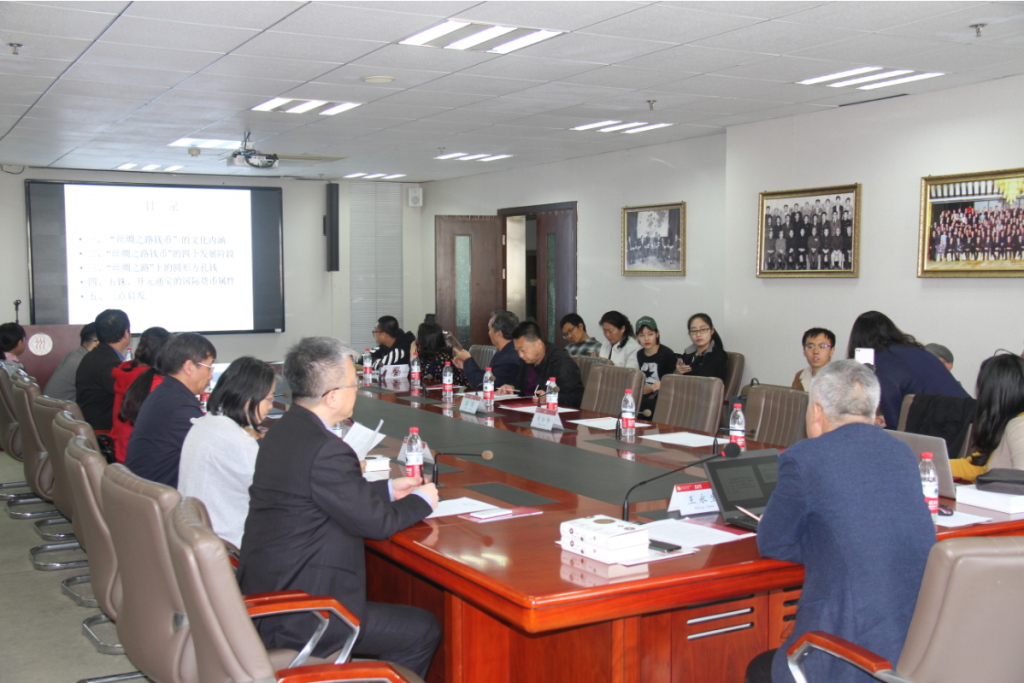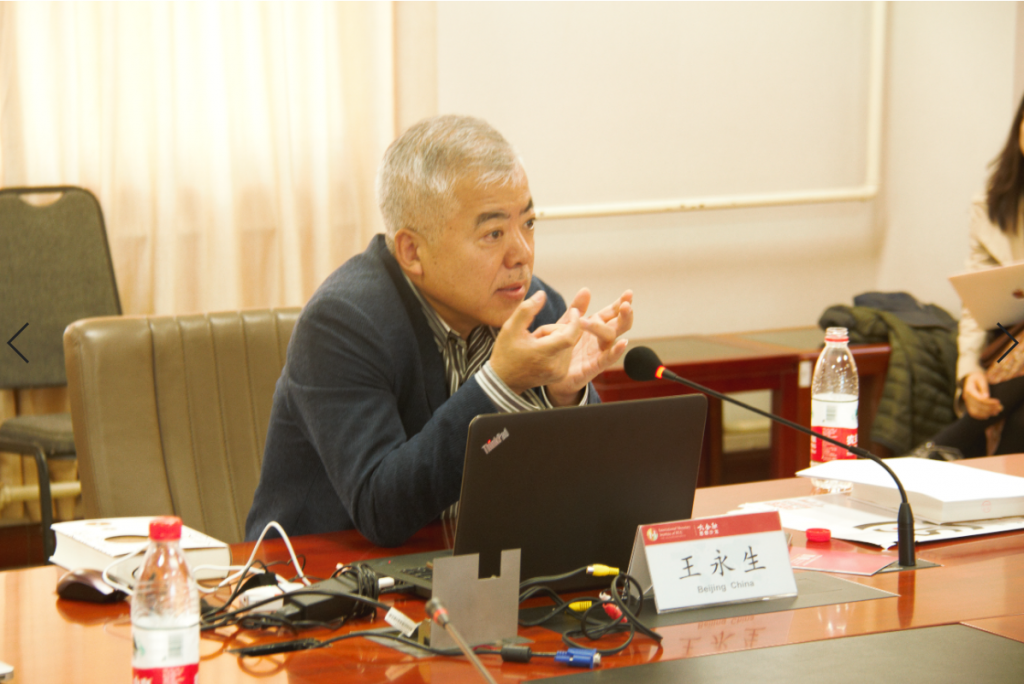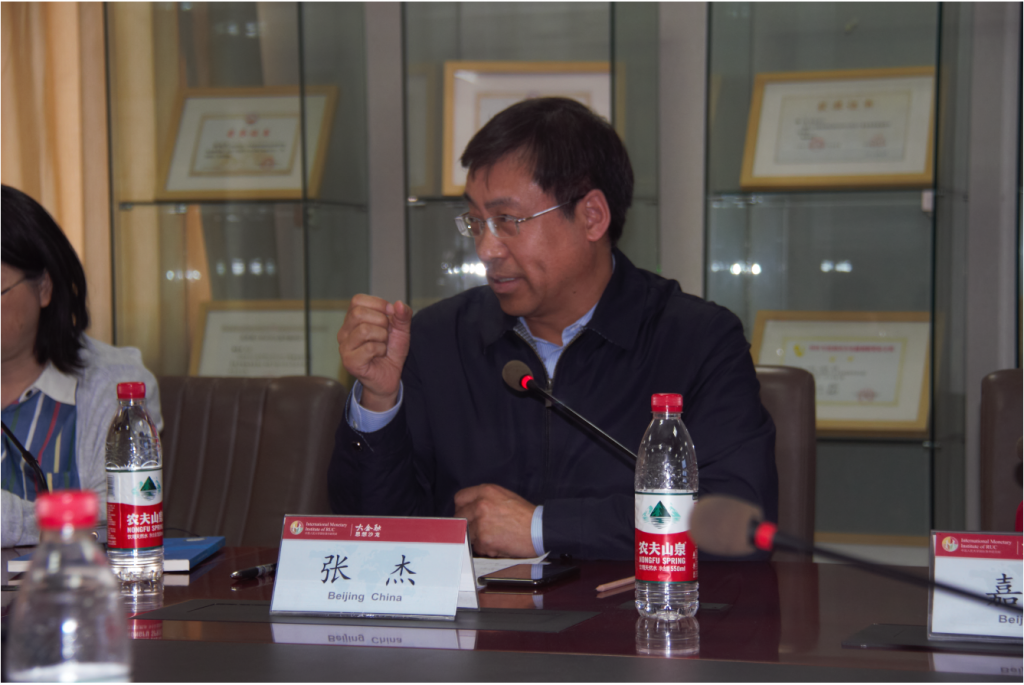Macro-finance Salon (No. 118): Round Coins with Square Holes on the Silk Road
2019-04-14 IMI The seminar mainly covered the cultural connotation and the development of “coins on the silk road”, round coins with square holes on the silk road, and the nature of Wuzhu and Kaiyuan Tongbao as international currency. First, starting with an introduction of the history of the silk road, he specified that the “money used on the silk road” was not merely the currency used in countries along the road. Rather, with the function of money, they were the medium to promote cultural exchanges and interconnectivity.
The seminar mainly covered the cultural connotation and the development of “coins on the silk road”, round coins with square holes on the silk road, and the nature of Wuzhu and Kaiyuan Tongbao as international currency. First, starting with an introduction of the history of the silk road, he specified that the “money used on the silk road” was not merely the currency used in countries along the road. Rather, with the function of money, they were the medium to promote cultural exchanges and interconnectivity.
 Then, Mr. Wang pointed out that due to the rise and fall of various political powers, the exchange and integration of western and eastern cultures, and the development of the silk road itself, the money used on the silk road developed in four stages, which all linked with each other. Namely, they are Extending to the East, Eastern Currency Extending to the West, Islamization, and Returning to the East.
Later, Director Wang introduced the nature of Wuzhu and Kaiyuan Tongbao as international currency. He said these two forms of currency were widely used in countries along the silk road, and were minted by many countries and regions as standard currency. All these demonstrated the prevalence of round coins with square holes and “Zhu” in Japan, Vietnam, Uyghur Knaganate, Karakhoja (Gaochang in Xinjiang province), etc.
At last, Wang concluded that according to the history, central Asia once used round coins with square holes before being Islamized. Wuzhu and Kaiyuan Tongbao served as the international currency and laid the foundation for later forms of coins. Therefore, it is obvious that with the rise of China, the internationalization of Renminbi is bound to happen.
Professor Tu Yonghong pointed out that in the past, people tended to compare the economic strength of major powers from a horizontal perspective. Director Wang, however, provided a vertical perspective to study the history of ancient Chinese currency, which had been highly internationalized throughout the one-thousand-year history. This laid a cultural and historical foundation for the numismatic study and the internationalization of Renminbi.
Then, Mr. Wang pointed out that due to the rise and fall of various political powers, the exchange and integration of western and eastern cultures, and the development of the silk road itself, the money used on the silk road developed in four stages, which all linked with each other. Namely, they are Extending to the East, Eastern Currency Extending to the West, Islamization, and Returning to the East.
Later, Director Wang introduced the nature of Wuzhu and Kaiyuan Tongbao as international currency. He said these two forms of currency were widely used in countries along the silk road, and were minted by many countries and regions as standard currency. All these demonstrated the prevalence of round coins with square holes and “Zhu” in Japan, Vietnam, Uyghur Knaganate, Karakhoja (Gaochang in Xinjiang province), etc.
At last, Wang concluded that according to the history, central Asia once used round coins with square holes before being Islamized. Wuzhu and Kaiyuan Tongbao served as the international currency and laid the foundation for later forms of coins. Therefore, it is obvious that with the rise of China, the internationalization of Renminbi is bound to happen.
Professor Tu Yonghong pointed out that in the past, people tended to compare the economic strength of major powers from a horizontal perspective. Director Wang, however, provided a vertical perspective to study the history of ancient Chinese currency, which had been highly internationalized throughout the one-thousand-year history. This laid a cultural and historical foundation for the numismatic study and the internationalization of Renminbi.
 At the end of the meeting, Professor Zhang Jie said the brilliant speech given by Director Wang was of practical value. His speech started with the micro development of coins, and then discussed the internationalization of Renminbi, a macro topic, connecting the history with realities. Meanwhile, Director Zhang hoped to further discuss some questions with deeper meaning, such as whether the Chinese currency used in the west belongs to international currency, how far back does the ancient Chinese coins engaging in the flow of international currency go, and why China used copper instead of gold or silver used in the west as the mintage? These questions provided supplements to the discussion, broadening the horizons.
At the end of the meeting, Professor Zhang Jie said the brilliant speech given by Director Wang was of practical value. His speech started with the micro development of coins, and then discussed the internationalization of Renminbi, a macro topic, connecting the history with realities. Meanwhile, Director Zhang hoped to further discuss some questions with deeper meaning, such as whether the Chinese currency used in the west belongs to international currency, how far back does the ancient Chinese coins engaging in the flow of international currency go, and why China used copper instead of gold or silver used in the west as the mintage? These questions provided supplements to the discussion, broadening the horizons.
